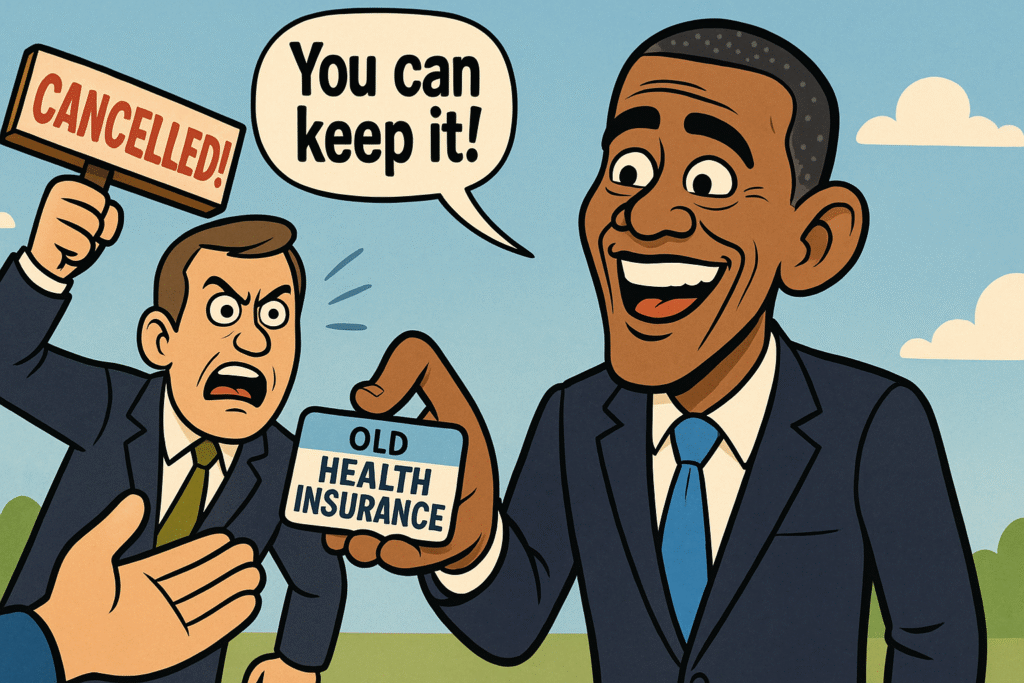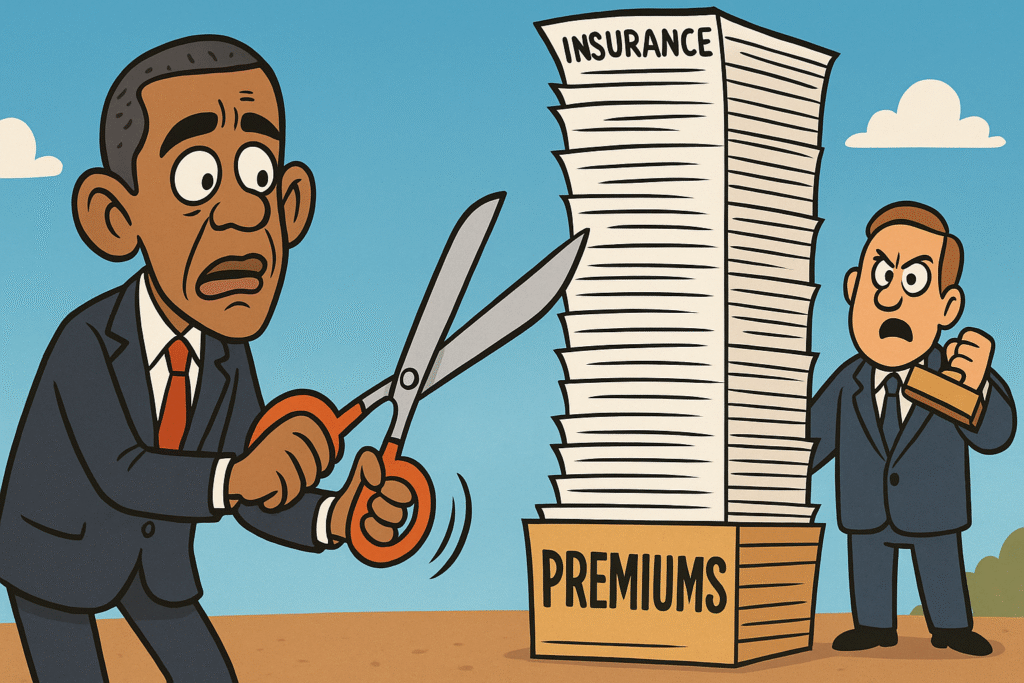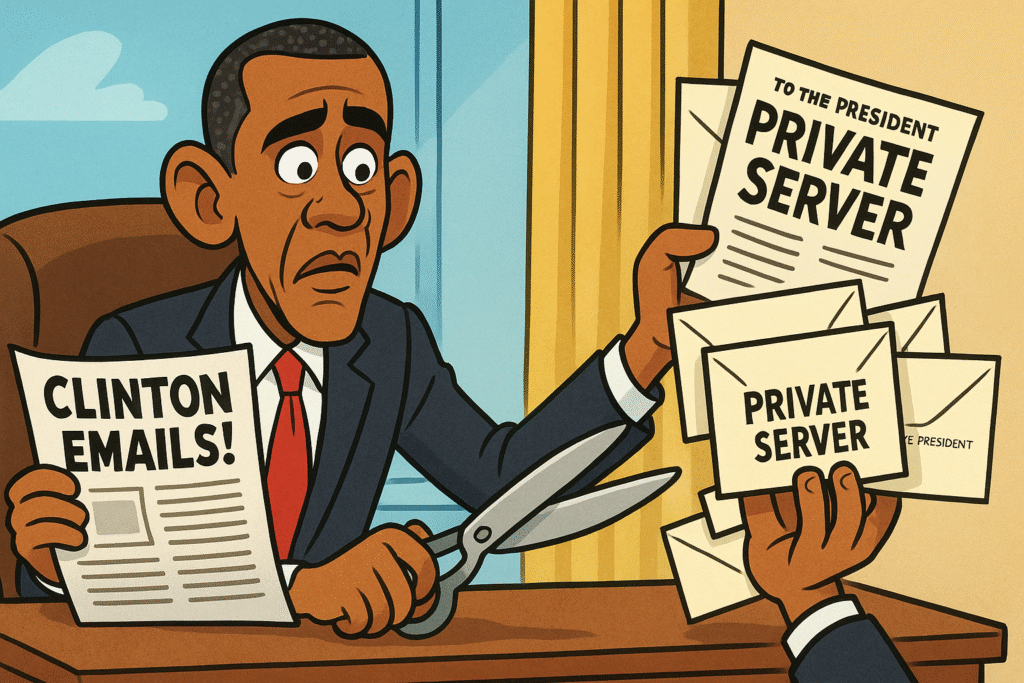Obama Truth: Top 5 Myths & Facts Exposed

Barack Obama’s presidency was defined by historic reforms and stirring rhetoric—but even his most celebrated soundbites sometimes missed the mark. In our deep-dive “Obama Truth” series, we bring you an impartial Obama fact check on five of his most talked-about pledges. From economic forecasts to healthcare promises, each claim is carefully unpacked, revealing the reality that followed and the documents, data, and expert analyses that laid bare the discrepancies. Whether you’re looking to separate fact from fiction or to understand the full context behind the headlines, this fact-driven review exposes the Obama lies you didn’t know you were hearing—and highlights the hard evidence that reshapes the narrative. Let’s cut through the spin and get to the unvarnished truth.
Table of Contents
1. Obama Truth? – Promise to Keep Your Old Plan

During the ACA rollout and throughout the 2012 campaign trail, President Obama repeatedly assured Americans that:
“If you like your health care plan, you can keep it.”
Millions of policyholders received cancellation notices in late 2013 because their plans didn’t comply with the new Affordable Care Act requirements. Health and Human Services officials conceded the statement was “not accurate,” and Obama later apologized.
Why plans were canceled
The Affordable Care Act established minimum standards for individual and small-group policies—what are known as the “essential health benefits” (EHBs). These included coverage for prescription drugs, maternity care, mental-health services, and no annual or lifetime limits on benefits. Many pre-ACA plans, especially those sold directly to individuals, lacked one or more of these required benefits, and so insurers sent cancellation notices to bring their offerings into compliance.
The scale of the cancellations
By the end of 2013, insurers had canceled or refused to renew roughly 4 million individual-market plans nationwide. For many enrollees—particularly older or less-healthy individuals—the new compliant plans were significantly more expensive. Premium increases of 20–30 percent (or more) were common, even before accounting for ACA subsidies.
“Transitional” relief and the apology
Facing a backlash from consumers and lawmakers, HHS announced a one-year “transitional policy,” allowing insurers to renew non-compliant plans through late 2014 (and, in some states, into 2015). Still, the damage to public confidence had been done. In November 2013, President Obama acknowledged the mismatch between his promise and reality:
“I am sorry that they are finding themselves in this situation based on assurances they got from me.”
He went on to say that his intention had been to ensure people could keep good plans, and that the cancellations were “miscommunications” within his administration.
Political and practical fallout
Republicans seized on the broken promise as emblematic of Washington overreach, making it a centerpiece of their 2014 midterm campaigns. Even some Democrats privately admitted that the administration had underestimated both the complexity of insurers’ product portfolios and the communications challenge of rewriting a $1 trillion law.
On the practical side, millions of Americans who did qualify for subsidy assistance enrolled in more comprehensive coverage—often with lower out-of-pocket maximums and richer benefits—than they had before. Yet the perception that “Washington lied” lingered, complicating outreach efforts and dampening enthusiasm for further health-care reforms.
Longer-term implications
In the years since, policymakers have treated the “keep your plan” episode as a cautionary tale about overpromising in major regulatory rollouts. Insurers have become more proactive in identifying non-compliant grandfathered and grandmothered plans, and agencies now build in transitional authorizations from the start. For consumers, the upheaval underscored both the value of comprehensive coverage and the political risks of change—particularly when messages get ahead of the messy details.d. PolitiFact designated it the 2013 “Lie of the Year”, and the Washington Post documented the fallout in detail.
2. $2,500 Premium Cut Guarantee

Origins of the $2,500 Pledge
During the 2008 campaign, Senator Obama vowed that his health-care overhaul would “cut the cost of a typical family’s premium by up to $2,500 a year.” This figure combined anticipated savings from a variety of sources—greater use of electronic medical records, streamlined administrative processes, expanded preventive care, and better chronic-disease management—not merely the enrollee’s direct monthly premium bill en.wikipedia.org.
Why Premiums Didn’t Fall
- System-wide vs. Household Savings
The administration’s $2,500 figure drew on projected reductions in government health-care spending (Medicare and Medicaid) and estimated employer contributions—not actual family premiums. By framing aggregate cost-control measures as family savings, expectations became untethered from how insurance markets would actually price risk and benefits. - Rising Underlying Costs
Even as the ACA introduced delivery-system reforms, health-care prices (for hospital care, specialty drugs, and labor) continued to climb. Those upward pressures outstripped any modest premium-holding measures in the early law. In practice, average family premiums kept rising rather than dropping by $2,500.
Actual Premium Trends
- Promise Broken: On August 31, 2012, PolitiFact rated the pledge Promise Broken, noting that family premiums had not decreased but continued their upward trajectory politifact.com.
- The Numbers: According to a White House archive chart cited by opponents, instead of a $2,500 cut, average premiums went up by nearly $3,000 in the first years after enactment trumpwhitehouse.archives.gov.
- Cost-Growth Slowdown: While premiums still rose, the rate of increase did slow compared with the decade preceding the ACA—marking the slowest growth in overall health-care spending in over five decades, including employer-sponsored plans en.wikipedia.org.
Administration Response
Rather than dispute the underlying cost-growth slowdown, the White House acknowledged that the campaign slogan had created unrealistic expectations about year-over-year family premium cuts. Officials argued that the intent was to cap net family costs relative to a rapidly escalating baseline, not literally drive premiums below 2008 levels. No formal apology was issued, but spokespeople conceded the shorthand promise was over-simplified.
Political and Practical Fallout
- Messaging Backlash: Republicans seized on the broken promise as a symbol of “Washington hype,” weaving it into midterm and presidential campaigns to erode confidence in federal reforms.
- Consumer Confusion: Insured families who saw their premiums rise felt betrayed, even if many ultimately qualified for subsidies that tempered out-of-pocket expenses.
- Policy Adjustments: Going forward, regulators and insurers built more conservative projections into rate-filing justifications, and communications teams began qualifying cost-control estimates with clearer caveats.
Longer-Term Implications
The $2,500 episode stands as a cautionary tale about overpromising in major regulatory rollouts. It underscored the importance of distinguishing between macro-level savings and micro-level costs, and it prompted both policymakers and advocates to frame future health-care goals with far greater precision. Today’s debates around drug-pricing reforms and hospital consolidation continue, but with lessons learned about aligning public expectations with the complex dynamics of health-care markets.
3. Obama Claims he has a “Red Line”

Setting the Red Line (August 2012)
As the Syrian civil war raged into its second year, reports emerged of President Bashar al-Assad’s regime amassing and possibly deploying chemical agents. In an August 20, 2012, press conference, President Obama declared:
“A red line for us is we start seeing a whole bunch of chemical weapons moving around or being utilized. That would change my calculus.”
By invoking this “red line,” Obama sought both to deter Assad from gassing civilians and to signal U.S. resolve to allies and adversaries alike.
The Ghouta Attacks and the Moment of Truth (August 2013)
On August 21, 2013, rockets laden with sarin nerve agent struck rebel-held neighborhoods in Ghouta, killing hundreds of men, women, and children. The U.S. intelligence community—alongside independent open-source investigators—quickly attributed the attack to Assad’s forces. A dilemma ensued:
- Legal and Moral Imperative: U.S. and international law forbade the use of chemical weapons and demanded accountability for war crimes.
- Congressional Hesitation: Obama sought authorization from Congress for limited strikes; but facing a skeptical Capitol, the administration delayed, ultimately falling short of a vote.
- International Diplomacy: France and the U.K. urged action, while Russia and China opposed military intervention.
From Red Line to “Blurry” Line
In the months following Ghouta, the administration pivoted to a diplomatic solution. Secretary of State John Kerry brokered a U.S.–Russia deal under which Assad would declare and destroy his chemical arsenal:
- Public Recharacterization: In September 2013, Obama stated, “I didn’t set a red line; the world set a red line,” shifting responsibility from his August 2012 warning to collective global resolve.
- Fact-Checking the Contradiction:
- FactCheck.org titled its analysis “Obama’s Blurry Red Line,” noting that video and transcript evidence clearly show the president himself setting the threshold .
- The Washington Post Fact Checker assigned “three Pinocchios” for the later claim, underscoring the inconsistency between his initial warning and subsequent language .
Political and Strategic Fallout
- Credibility Costs: Critics—from Capitol Hill to global capitals—argued that failing to enforce the red line emboldened Assad (and other autocrats) to flout international norms.
- Congressional Wariness: After the near-miss on Syria, Congress grew more reluctant to authorize executive military action without a clear mandate—a hesitancy still felt in debates over future interventions.
- Humanitarian Consequences: While the chemical-weapons deal delayed further gas attacks, poison-gas incidents continued sporadically, and Assad’s conventional campaign meanwhile caused massive civilian suffering.
Longer-Term Lessons
- Deterrence vs. Credibility: A public warning only deters if opponents believe it will be enforced. Statesmen since have weighed the trade-off between clear threats and the risk of empty ones.
- Diplomacy’s Limits: Although the 2013 accord led to significant chemical stockpile destruction, subsequent OPCW investigations found lingering capabilities—underscoring the difficulty of verifying compliance in wartime.
- Narrative Control: Obama’s evolution from red-line issuer to red-line deflector illustrates how leaders may shift messaging post hoc to manage both domestic politics and international expectations.
The “Red Line” in Retrospect
Today, the “red line” episode is taught in war-college seminars and diplomatic schools as a case study in coercive diplomacy and crisis communication. It serves as a stark reminder that the potency of a threat depends not only on its content but on the audience’s belief in the speaker’s willingness to act.lurry Red Line” and the Washington Post Fact Checker both highlighted the contradiction.
4. Underestimating ISIS with a Sports Analogy

1. Context of the Fallujah Offensive
In early January 2014, ISIS fighters swept into the Iraqi city of Fallujah, raising their black flag over government buildings and demonstrating a level of organization and firepower unseen since U.S. forces withdrew in 2011. During a Jan. 7 Oval Office interview with The New Yorker, President Obama was asked about the resurgence of al-Qaeda–affiliated groups across Iraq, Syria, and Africa. It was in this setting—immediately following Fallujah’s fall—that Obama leaned back and quipped about basketball teams factcheck.org.
2. The “JV Team” Remark
Obama said:
“The analogy we use around here sometimes, and I think is accurate, is if a JV team puts on Lakers uniforms, that doesn’t make them Kobe Bryant.”
He was drawing a distinction between groups with local ambitions and the core al-Qaeda network actively plotting major attacks against the U.S. homeland. The implication—that donning the trappings of a global jihad did not equate to genuine capability—was meant to caution against overreacting to every extremist flare-up.
3. Immediate Attempt to Distinguish from ISIS
When pressed on Sept. 7, 2014, by Chuck Todd on Meet the Press, Obama insisted he “wasn’t specifically referring to ISIL” with the Lakers analogy. Yet the original New Yorker transcript makes clear that Remnick’s line of questioning was anchored in Fallujah’s takeover—an operation attributed squarely to ISIS washingtonpost.com. White House spokesman Josh Earnest later defended the president by pointing to the broader context of “a range of extremists,” but FactCheck.org deemed that defense “fairly misleading” factcheck.orgwashingtonpost.com.
4. Fact-Checking and Media Critique
- FactCheck.org (“Obama Fumbles ‘JV Team’ Question,” Sept. 8, 2014) concluded that Obama could not credibly deny he was talking about ISIS, since the Fallujah context was explicit in both transcript and article factcheck.org.
- Tampa Bay Times similarly noted the administration’s post-hoc distancing as an effort to rewrite history, emphasizing that the remark was made just days after ISIS’s defining territorial gain tampabay.com.
5. Strategic Fallout
The gaffe reinforced perceptions—among allies and adversaries—that the U.S. leadership was prone to underestimating emergent threats. Critics argue this initial verbal downplay contributed to a slower U.S. response and allowed ISIS to consolidate control over vast swaths of Iraq and Syria throughout 2014. It was only after ISIS’s brutal advance on Erbil and the public executions of American journalists that the administration shifted to a direct counter-ISIS campaign.
6. Lessons in Crisis Communication
The “JV team” episode underscores the dangers of slick analogies in high-stakes foreign-policy debates. Leaders must balance colorful rhetoric with precise messaging—especially when deterrence rests on the credibility of public threats. In coalition warfare, mixed signals can erode partner confidence; in today’s information age, every sound bite is scrutinized and archived, amplifying the long-term impact of a single phrase on international credibility.
5. Learning of Clinton’s Emails “Like Everyone Else”

Context: The New York Times Revelation (March 2, 2015)
On March 2, 2015, the New York Times broke the story that Hillary Clinton had exclusively used a private email server for her official State Department correspondence from January 2009 through February 2013. This disclosure ignited fierce debate over transparency, record-keeping, and national-security implications surrounding her email practices.
Obama’s “Like Everyone Else” Claim (March 7, 2015)
Five days later—on March 7—CBS News’s Bill Plante asked President Obama directly when he first learned of Clinton’s private email setup. Obama replied:
“I learned at the same time everybody else did—through news reports.” factcheck.org
This statement implied that the White House had been as surprised by the server revelations as the general public.
The White House Acknowledgment
Within days, Press Secretary Josh Earnest clarified that, in fact, the President and Secretary of State had exchanged emails—and that Obama “was aware of her email address,” even if he “was not aware of the details of how that email address and that server had been set up.” cbsnews.com
- Email Exchanges: FBI documents later revealed that Obama sometimes used a pseudonym in his messages to Clinton cbsnews.com.
- Scope: While the total number of exchanges remains unclear, the admission confirmed that he could not have learned “through news reports” what email address to use.
Fact-Checking the Contradiction
- FactCheck.org (March 10, 2015) concluded that Obama’s claim was misleading, since he necessarily knew of Clinton’s private address before the media reports—otherwise, he could not have emailed her at that address. The article noted that “the White House now says the two leaders traded emails and ‘the president was aware of her email address.’” factcheck.org
- Media Analysis: Outlets from Politico to ABC News reported on the seeming contradiction between the President’s public denial of prior knowledge and the subsequent acknowledgment of direct correspondence.
Political and Public Fallout
- Credibility Questions: Critics argued that the episode reinforced perceptions of political spin and eroded trust in both Clinton and the Obama administration’s communications.
- 2016 Campaign Impact: The email controversy dogged Clinton’s 2016 presidential bid, with opponents seizing on the “everyone else” line as emblematic of a broader pattern of obfuscation.
- Narrative Control: The White House’s rapid back-pedaling illustrated the risk of off-the-cuff remarks in high-stakes political moments.
Longer-Term Lessons
- Precision Matters: Even seemingly minor inaccuracies can have outsized repercussions in an age of 24/7 news and extensive archives.
- Record-Keeping Culture: The debate highlighted the importance of adhering to federal-records laws and the challenges of blending personal convenience with official communications.
- Crisis Messaging: Leaders now often build in caveats and pre-approved talking points to avoid post-hoc corrections under media scrutiny.
The “like everyone else” episode remains a case study in how quickly a single sound-bite can shift from a deft line to a credibility trap, with effects reverberating through both policy debates and electoral politics.dia. FactCheck.org’s analysis of Obama on Clinton’s emails and Reuters coverage confirm the discrepancy.
Conclusion
Even the most careful rhetoric can run into reality checks, and these five examples show that presidential statements are no exception. Our comprehensive Obama fact check has laid bare the gaps between polished speeches and on-the-ground outcomes, underscoring why rigorous analysis matters. By spotlighting these Obama lies—whether in health-care reassurances that fell short or foreign-policy red lines that shifted—the “Obama Truth” series demonstrates how promises and practice can diverge.
Fact-checking not only holds leaders accountable but also empowers citizens to demand clarity and consistency. As we reflect on these findings, let’s hope future administrations embrace transparent dialogue and precise language from day one—so that the next “truth” we uncover is the one delivered, not just the one proclaimed.
FAQ – Obama Truth
What was Obama’s “keep your plan” promise and why did it fail?
He assured that “if you like your health care plan, you can keep it,” but millions saw their plans canceled in 2013 for not meeting ACA standards. HHS admitted the claim was inaccurate, and PolitiFact named it Lie of the Year.
Did the ACA cut family premiums by $2,500 as Obama claimed?
No—while growth in health-care costs slowed, average premiums continued to rise rather than drop by $2,500. Fact-checkers found he mixed broad system savings with individual household projections.
What was the “red line” Obama drew on Syria, and how was it contradicted?
In August 2012 he warned chemical-weapon use would cross a “red line,” then later denied setting it himself. Video and transcripts proved he originated the phrase, a reversal flagged by multiple fact-checkers.
Why is the “JV team” analogy about ISIS considered misleading?
Obama said, “If a JV team puts on Lakers uniforms, that doesn’t make them Kobe Bryant,” clearly referring to ISIS’s Fallujah gains. He later claimed it wasn’t about ISIS, contradicting the original interview context.
When did Obama actually learn about Clinton’s private email server?
He claimed he learned “at the same time everybody else did—through news reports,” but the White House later confirmed he had exchanged emails with her private account. That direct access means he couldn’t have first heard via the media.
What are some of the most cited “Obama lies”?
While “lie” is a strong term, common examples flagged in our series include the timing and scope of the Affordable Care Act rollout, economic growth projections post-2009 stimulus, and certain foreign-policy red lines (e.g., the “chemical-weapons” threshold in Syria). Each of these has been scrutinized in our “Top 5” breakdown.
Why is it important to seek the “Obama truth”?
Understanding the Obama truth fosters an informed electorate. Fact-based analysis encourages accountability, helps voters separate effective policy from empty rhetoric, and sets a precedent for evaluating future presidents on their real-world impact, not just their talking points.
Where can I find reputable sources for an Obama fact check?
Look to nonpartisan fact-checking organizations (e.g., FactCheck.org, PolitiFact, and The Washington Post’s Fact Checker), official government reports (CBO, GAO), and peer-reviewed academic studies. These blend data-driven insight with contextual analysis to uncover the Obama truth.
Sources – Obama Truth
- PolitiFact: Obama Truth “Lie of the Year 2013”
https://www.politifact.com/article/2013/dec/12/lie-year-if-you-like-your-health-care-plan-keep-it/ - Washington Post: “Politifact awards ‘Lie of the Year’ to Obama”
https://www.washingtonpost.com/news/post-politics/wp/2013/12/12/politifact-awards-lie-of-the-year-to-obama/ - PolitiFact Obameter: Promise Rated “Broken”
https://www.politifact.com/truth-o-meter/promises/obameter/promise/853/my-health-care-plan-will-reduce-premiums/ - FactCheck.org: Obama Truth “Misleading on Premiums”
https://www.factcheck.org/2009/11/misleading-on-premiums/ - FactCheck.org: “Obama’s Blurry Red Line”
https://www.factcheck.org/2013/09/obamas-blurry-red-line/ - Washington Post Fact Checker: “Obama: I didn’t set a red line, the world did”
https://www.washingtonpost.com/news/fact-checker/wp/2013/09/05/obama-i-didnt-set-a-red-line-the-world-did/ - FactCheck.org: Obama Truth “Obama Fumbles ‘JV Team’ Question”
https://www.factcheck.org/2015/05/obama-fumbles-jv-team-question/ - Tampa Bay Times: “Obama denies he called ISIS ‘JV team’”
https://www.tampabay.com/news/politics/national/obama-denies-he-called-isis-jv-team/2165904/ - FactCheck.org: “Obama on Clinton’s Emails”
https://www.factcheck.org/2015/04/obama-on-clintons-emails/ - Reuters: “Obama says he learned of Clinton’s email through news reports”
https://www.reuters.com/article/us-usa-email-obama/obama-says-he-learned-of-clintons-email-through-news-reports-idUSKBN0MB05F20150303




great